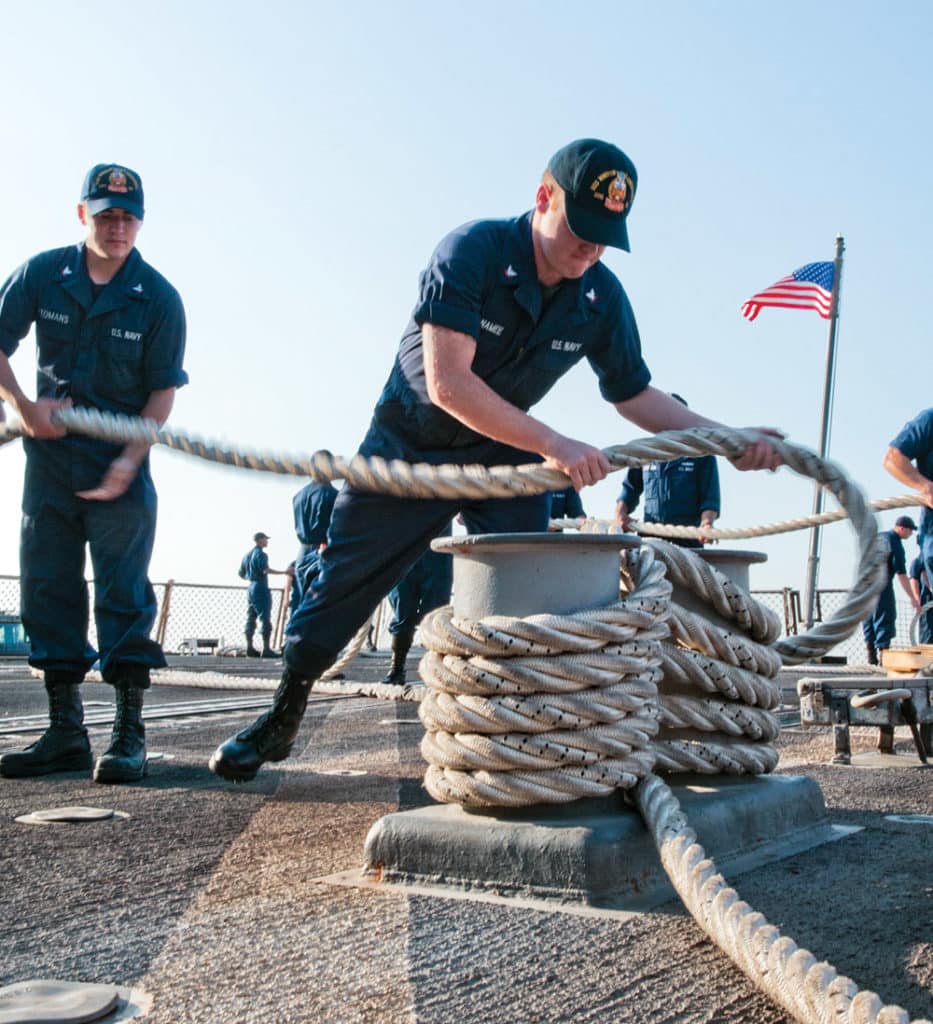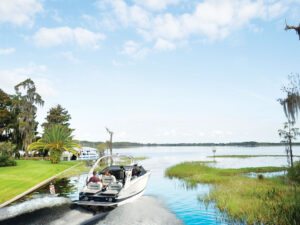
Five “Deck Seamanship” Responsibilities
Some of the biggest mishaps around marinas involve a captain who maneuvers into a slip and then conducts a Chinese fire drill trying to make fast the lines. The results? Boats smash into pilings, bang the bow pulpit or the props against a bulkhead, or even lose a passenger overboard. Once I watched a dock helper break his arm between the gunwale and concrete. In each case the captain would have been better off with some help from a “deck ape.”
The term deck ape is Navy slang for the jack-of-all-trades sailor who handles the lines, manages cargo loads, does routine maintenance and cleaning, and stands lookout, if needed. It’s a lowly role in terms of naval hierarchy but it’s a vital one. Here are five “deck seamanship” responsibilities a captain should designate to his ablest (most apelike?) friend so he can keep focus at the helm.
Handling Lines
An ape needs to know three basic line skills when situations call for these: a cleat hitch, a clove hitch and a bowline.
When tying to a cleat, always take a round turn around the base before doing figure eights around the horns. That way you’ll always be able to loosen the line, even if the tide drops out. Finish with a half hitch.
The clove hitch is one of the simplest ways to secure a line to a piling. It’s basically two identical loops stacked on top of each other that, when tightened, form half hitches.
The bowline can be used to make fast to a piling, mooring or cleat, or can be made in advance any time a nonslip loop will be needed. All can be mastered with about 10 minutes of practice. (For instructions, go to boatingmag.com/boating-knots.)
Setting Anchor
Before dropping anchor, make sure he’s secured the bitter end. No duh? Don’t wait until the whole rode disappears. Also, slowly lower the anchor — don’t throw it — under (not over) the bow rail and work the line out hand-over-hand to prevent tangles. Try marking off depths with tape or paint — green for 25 feet, red for 50 feet and so on — so a novice ape will stream out the right length.
Standing Lookout
Have your ape keep an eye out for hazards, including other boats, shoals, crab-pot buoys or deadheads. When docking, keep eyes where the captain can’t see, and for tow sports, besides a spotter, it’s good practice to have a second person watch for everything else.
Stowing Gear
This may seem simple but weight distribution will affect a boat’s ride, so have your ape evenly distribute all supplies and gear to maintain proper balance. Also, make sure everyone’s sitting so that the boat doesn’t list, squat or plow.
Managing Decks
Keep the walkways clear and clean up spills that could cause slips, trips or falls overboard. An ape is also a second set of eyes for a pre-trip inspection, to make sure you didn’t miss any loose screws or fittings, low fluids, or, ahem, the drain plug.
Your deck ape might not appreciate his new nickname, but you’ll appreciate having him aboard. (Note: Don’t use this nickname with your wife, unless you want an ex.)









